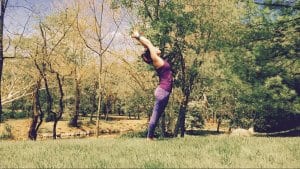Written by: Andy Vantrease
I remember the first time I meditated. I sat down next to my friend in her living room, she turned on the iPhone Headspace App: Lesson One, and a calm British voice guided us through 10 minutes of meditation. I remember saying afterwards, “I’m really bad at this,” and “I couldn’t stop thinking!” I finished a full week of guided meditations and still thought, “Why can’t I stay focused? Why does my mind always wander? Why didn’t I say what I wanted to say to that person two weeks ago? Why can’t I just move on?”
You may recognize this voice. The one who loves to drag you back in time and analyze everything you’ve ever said and done, drowning your thoughts in What If’s and If Only’s. You start to visualize different outcomes based on the options you had in some recent or even distant past. Or maybe you’re better friends with the future voice, the worrier who concocts hypothetical scenarios and gets bent out of shape for something that hasn’t happened and may never happen. She’s a heavy hitter, too. How about the one who is judging you for every strange thought you have? He’s tough to please, isn’t he?
We all have many voices in our heads. We spend so much time absorbing opinions from TV, radio, magazines, friends and family, it’s tough to distinguish our own thoughts from those projected onto us from outside influences. The goal is to find the inner voice. The authentic voice. The one who guides your intuition. The one who throws out those messages to the body when something “just feels wrong” or “just feels right.” We oftentimes disregard thoughts like this and choose to second guess our instincts, only to find out we may have been better off listening to them.
My advice for finding your inner voice: stop talking and listen. You don’t have to sit on a hand-woven glorified rainbow pillow in a dark room or climb to the top of a mountain for a profound meditative experience (although both sound quite nice, eh?). The practice is about getting into your head, into your own mind and noticing the thought patterns. Facing the emotions that arise when you think about certain people and situations. Forgiving yourself for being human yet visualizing what it would look like to live to your utmost potential. Relearning your values as you begin to see them surface over and over. What do you truly care about? What makes your heart beat faster? What kind of person do you want to be? How would you like to contribute to the world?
In a society filled with pressure to be a certain way, you have to work very hard to remain authentic and aligned with your values. Years can go by and you realize you’ve been on autopilot, living someone else’s dreams or striving to reach goals that don’t resonate with you. This is the perfect time to start the journey back to your self. Get quiet, listen closely and trust what you hear.
